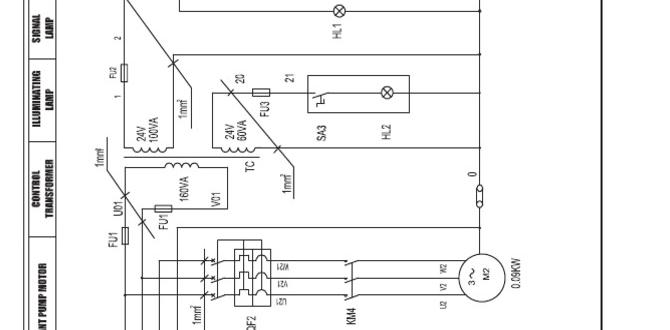Quick Summary
For precision G10 machining, a carbide end mill with an 8mm shank and 3/16-inch cutting diameter is a proven solution. Its rigidity and sharpness ensure tight tolerances and clean cuts in this challenging material, making it ideal for intricate designs.
Working with G10 can feel like a puzzle, especially when you need those super-precise cuts. You know, the kind where every measurement has to be just right? Getting those tight tolerances is key for many projects, but G10 can be abrasive and brittle, making it tough on tools. If your end mill chatters or leaves a rough edge, you’re not alone! It’s a common frustration for machinists, but don’t worry. We’ve got a reliable way to tackle this. By choosing the right tool, specifically a carbide end mill designed for precision, you can achieve those perfect dimensions and smooth finishes G10 demands. Let’s explore how a specific type of end mill can be your best friend for these exacting jobs!
Why G10 Demands the Right Tool
G10 is a pretty amazing composite material made from layers of fiberglass cloth and epoxy resin. It’s super strong, electrically insulating, and resistant to heat and moisture. This makes it fantastic for all sorts of applications, from circuit boards and tool handles to firearm grips and high-performance components. However, its unique makeup also presents a challenge for machining. The fiberglass resin is abrasive, meaning it can wear down softer cutting tools very quickly. Plus, G10 isn’t very forgiving; if you’re not careful, it can chip or delaminate, ruining your part and your day.
achieving tight tolerances in G10 means your cutting tool needs to be:
- Sharp: To slice cleanly through the material without snagging or chipping.
- Hard: To resist the abrasive nature of the fiberglass and epoxy.
- Rigid: To prevent chatter and maintain dimensional accuracy.
- Designed for the task: Certain tool geometries work better than others.
This is where the humble end mill comes in, but not just any end mill will do. We need something tougher, something more precise. We need to talk about carbide.
Introducing the Carbide End Mill for G10
When we talk about machining tough materials like G10, carbide tools are usually the go-to choice. Why carbide? Well, it’s incredibly hard and can withstand higher temperatures than high-speed steel (HSS) tools. This means it stays sharper for longer and can cut through abrasive materials like G10 with less wear. For achieving those critical, tight tolerances, a specific type of carbide end mill is often recommended: a carbide end mill with an 8mm shank and a 3/16-inch cutting diameter.
Let’s break down why this combination is so effective:
The Power of 8mm Shank Rigidity
The shank is the part of the end mill that goes into your machine’s collet or tool holder. An 8mm shank is a good middle ground. It’s substantial enough to offer excellent rigidity compared to smaller shanks (like 1/4 inch or 6mm). This rigidity is crucial when cutting G10 because it:
- Reduces runout: This is the wobble you might see in the cutting tip. Less runout means more accurate cuts.
- Minimizes vibration and chatter: Chatter is that horrible noisy vibration when cutting, and it’s a killer for surface finish and accuracy. A stiffer shank helps dampen this.
- Allows for faster feed rates: With a more rigid tool, you can often push your machine a little harder, meaning faster machining without sacrificing quality.
For hobbyists and professionals alike, the improved stability from an 8mm shank translates directly into more consistent and precise results, especially on intricate G10 parts.
The Precision of a 3/16-Inch Cutting Diameter
Now, let’s look at the cutting end. A 3/16-inch (which is roughly 4.76mm) diameter is a very common and useful size for detailed work. Here’s why it’s a great choice for G10 tight tolerance applications:
- Fine Detail: A 3/16-inch cutter allows you to create small features, tight corners, and intricate patterns that larger tools simply can’t manage. This is vital for many G10 components.
- Material Removal Control: It removes material effectively without being overly aggressive, giving you better control over the cutting process. This is important for preventing chipping and accidental over-milling.
- Balance of Strength and Maneuverability: While smaller than, say, a 1/2-inch end mill, the 3/16-inch diameter still provides a good balance of cutting edge strength and the ability to navigate complex geometries.
When these two features – the sturdy 8mm shank and the precise 3/16-inch cutting diameter – come together in a carbide end mill, you have a potent tool for tackling G10 with confidence.
Key Features to Look For
Not all carbide end mills are created equal, especially when you’re aiming for G10 perfection. When you’re shopping for your 8mm shank, 3/16″ carbide end mill, keep these features in mind:
1. Material: Solid Carbide is King
We’ve already touched on this, but it’s worth reiterating. Ensure the end mill is made from solid carbide. This offers the best combination of hardness, heat resistance, and wear resistance needed for G10. HSS or coated HSS might work for some plastics, but for the best lifespan and cleanest cuts on G10, solid carbide is the way to go.
2. Number of Flutes (or Teeth)
End mills come with different numbers of flutes. For G10, a common recommendation is a 2-flute or 4-flute end mill.
- 2-Flute: These generally offer better chip evacuation, which is great for non-ferrous materials like G10. They also tend to be a bit more aggressive and can sometimes provide a smoother finish.
- 4-Flute: These can handle slightly higher feed rates and often provide a superior finish because more cutting edges are engaged. They are also generally stronger.
For very fine detail and preventing chip buildup in pockets, a 2-flute carbide end mill is often a fantastic choice for G10. If you’re doing more general profiling or slotting and want to push slightly faster, a 4-flute might be better, but be mindful of chip clearance.
3. Coating: Does it Help?
Some carbide end mills come with special coatings. For G10, coatings aren’t always as critical as they are for harder metals, but some can offer benefits:
- ZrN (Zirconium Nitride): Can improve lubricity and reduce friction, leading to cleaner cuts and less sticking, especially in resinous materials.
- TiCN (Titanium Carbonitride): Offers excellent hardness and wear resistance, which is always a plus with abrasive G10.
While a good quality uncoated carbide end mill will still perform well, a suitable coating can extend tool life and improve the surface finish even further.
4. Helix Angle
This refers to the angle of the cutting flutes. Common helix angles are 30°, 45°, and 37° (often referred to as a “general purpose” or “standard” helix). For G10, a standard helix angle is usually sufficient. Extremely high helix angles (like 60°) are typically for softer materials, while very low helix angles are for tougher metals.
5. End Type
Most end mills have a flat end, but you might see ball nose (for curves) or corner radius (for stronger edges). For basic profiling, slotting, and pocketing to achieve tight tolerances, a flat-end carbide end mill is your standard and most versatile choice.
Preparing Your Machine and Material
Having the right tool is only half the battle. Proper setup is crucial for success, especially with G10. Here’s how to get ready:
Secure Your Workpiece
G10 can be slippery, and the forces involved in milling, even with a small end mill, can cause it to shift. Use robust workholding methods. This could include:
- Clamps: Use edge clamps or toe clamps that hold the material down securely without interfering with your cutting path.
- Vacuum Table: If your machine has one, a vacuum table is excellent for holding flat sheets of G10 firmly in place.
- Fixturing: For repetitive parts, consider creating a custom fixture to locate and hold the G10 precisely.
Ensure your clamps or fixture don’t interfere with the tool’s movement. Mark your clamping locations carefully.
Set Your Zero Point Accurately
For tight tolerances, your X, Y, and Z zero points are critical. Use a precision edge finder or probe to set your XY zeros accurately on your part or fixture. For the Z-axis, use a height gauge with a dial indicator, a touch probe, or a known height block to set your tool zero. Even a tenth of a millimeter off can make a difference in precision work.
Consider a Spoilboard/Sacrificial Layer
When milling G10, especially on a CNC router or mill, it’s a good idea to mill into a sacrificial layer or spoilboard underneath your G10. This prevents accidentally “cutting air” or plunging too deep past the bottom of your G10 part, which could damage your machine table or the cutting edge of the end mill.
Optimal Cutting Parameters for G10
This is where a lot of beginners get tripped up. G10 needs a delicate balance of speed and feed to cut cleanly without burning, chipping, or breaking the tool. These are starting points, and you’ll likely need to fine-tune based on your specific machine, the exact G10 composition, and the end mill you’re using. Always prioritize safety and listen to your machine!
Speeds and Feeds Table (Starting Points)
For a 3/16-inch (4.76mm) diameter, 2-flute solid carbide end mill cutting G10, here are some suggested parameters. These are general guidelines. For more precise recommendations, consult your end mill manufacturer’s data sheet or resources like the Machinist’s Warehouse speeds and feeds guide.
| Parameter | Value for G10 | Notes |
|---|---|---|
| Spindle Speed (RPM) | 15,000 – 20,000 RPM | Higher RPMs with lower chip load are generally better for G10 to reduce heat and friction, preventing burning and improving finish. This assumes a capable, stiff spindle. |
| Surface Speed (SFM) | Approximately 300 – 400 SFM (convertible to RPM based on diameter) | |
| Feed Rate (IPM) | 6 – 15 IPM | Start on the lower end. This is calculated by: Chip Load per Tooth Number of Flutes RPM. |
| Chip Load per Tooth | 0.001″ – 0.002″ (0.025mm – 0.05mm) | This is a critical setting. Too high causes chipping; too low can cause burning and dulling. |
| Depth of Cut (DOC) | 0.030″ – 0.060″ (0.75mm – 1.5mm) | For full slotting, you might need multiple passes to achieve full depth. Smaller DOCs are safer and yield better results. |
| Width of Cut (WOC) | 0.030″ – 0.187″ (0.75mm – 4.76mm) | For profiling, a smaller WOC (e.g., 0.060″) is generally safer and provides a better finish than a full-width cut. |
| Plunge Rate | 1/2 or less than the cutting feed rate | Always plunge slowly into G10 to avoid shocking the tool and material. |
Understanding Chip Load
Chip load is how much material each flute of the end mill is designed to remove with each rotation. For G10, you want a small chip load. This means the tool takes a thin, precise bite of material. A chip load that’s too small might rub and generate excessive heat, while a chip load that’s too large will put too much stress on the tool and material, leading to chipping or breaking.
Example Calculation:
- Using a target Chip Load of 0.0015″ per tooth
- With a 2-flute end mill
- At 18,000 RPM
- Feed Rate = 0.0015″ 2 18,000 = 54 IPM (This is higher than the table, showing how parameters interact. You’d adjust based on what works.)
- Let’s re-calculate for the table sweet spot: If we want 10 IPM feed rate with 2 flutes at 18,000 RPM, the chip load is 10 IPM / (2 flutes * 18,000 RPM) = 0.00027″ per tooth. This indicates the table’s feed rate might be conservative or the RPM is lower. This highlights the crucial interplay!
It’s often easier to set your desired Chip Load and RPM, then let your machine’s software calculate the Feed Rate. Look for the recommended chip load for your specific end mill if available.
Coolant and Lubrication
While some materials benefit greatly from extensive coolant flood, G10 can be a bit different. Excessive coolant can sometimes lead to clumping of dust and resin, creating a mess. However, a light mist coolant or even an air blast can be very beneficial. An air blast helps clear chips and dust away from the cutting zone, which:
- Reduces heat buildup
- Prevents chip recutting
- Improves surface finish
If you’re using a CNC machine, an air blast nozzle is highly recommended. For manual milling, a careful application of compressed air or even a brush to clear dust as you go can help, but always be mindful of flying debris.
Tool Path Strategies
How you program or manually mill your part also affects the outcome:
- Climb Milling vs. Conventional Milling: For most G10 applications, climb milling is preferred. In climb milling, the cutter rotates in the same direction as the feed. This typically results in a better surface finish and less tool pressure. Conventional milling, where the cutter rotates against the feed, can be more prone to tearing and chipping G10.
- Pocketing: When milling pockets, use a “spring pass” if possible. This is a light finishing pass that takes off just a tiny amount of material (e.g., 0.001″). It helps clean up any slight inaccuracies and ensures the pocket walls are perfectly to size.
- Profiling: When profiling the outside of a part, ensure your toolpath is set up to cut outwards from the center (conventional) or inwards towards the center (climb), depending on your chosen method and how your machine is set up.
Visit resources like Haas CNC’s Tip of the Week for more insights into tool path optimization.
Troubleshooting Common G10 Machining Issues
Even with the right tool and setup, you might run into snags. Here’s how to fix common problems:
1. Chipping or Delamination
- Cause: Feed rate too high, depth of cut too aggressive, dull tool, incorrect tool path, or insufficient rigidity.
- Solution:
- Reduce feed rate.
- Reduce depth of cut.
- Ensure your end mill is sharp and not worn.
- Try climb milling.
- Check for any looseness in your machine’s lead screws or spindle.
- Ensure your workpiece is securely held.






